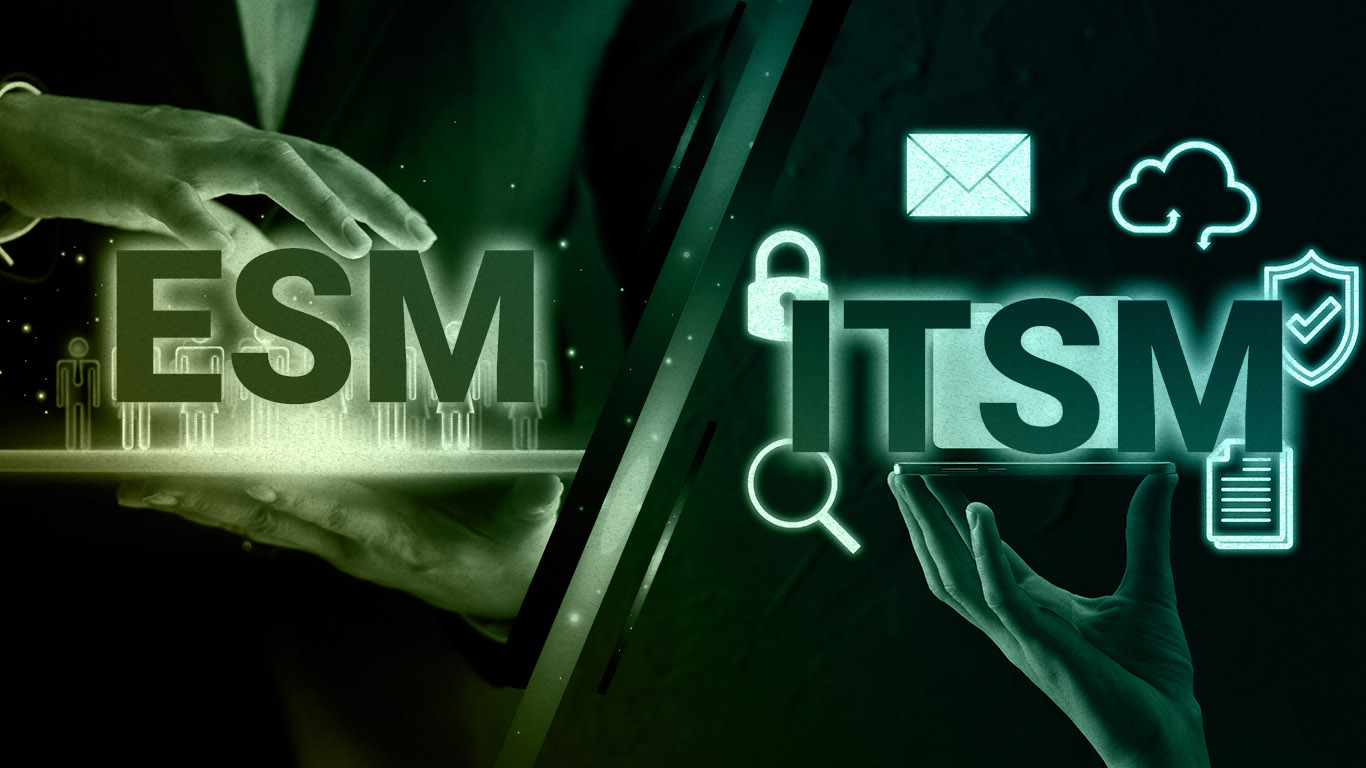
What is the Difference between ESM and ITSM? How Does ESM Benefit Organizations?
Friday, 07 October 2022
The landscape of service management is changing. According to a recent market study, digital transformation is the dominant trend that organizations are preparing for as they make plans for the future of service management. In order to support the digital transformation process, organizations are now implementing service management technologies to improve the delivery of services in the formerly siloed functions. Hence, Enterprise Service Management (ESM) as a practice emerged as a direct result of the success of IT Service Management.
Enterprise service management (ESM) includes the replacement of manually labor-intensive processes with digitally enabled workflows. Organizations have been able to advance their digital-first workflows thanks to a well-executed ESM strategy, which has increased employee value and allowed businesses to scale service delivery and offer unmatched customer experiences.
Let’s dig deeper into Enterprise Service Management (ESM)!
What is Enterprise Service Management (ESM)?
In a sense, Enterprise Service Management has grown significantly as a result of the expansion of IT Service Management. ESM means applying ITSM capabilities and principles to improve service delivery in non-IT areas of an organization. Since they've seen firsthand results with ITSM and the advantages of IT automation, such as increased operational efficiency and a significant drop in downtime, many more organizations now see the value in ESM.
ESM aims to offer and support easier-to-use employee services. Organizations now think that they can increase the efficiency of various other business functions by utilizing these automation techniques and workflows offered by ESM.
What Does Enterprise Service Management (ESM) Look Like?
Enterprise service management (ESM) encourages you to organize all of your business activities into a single, uncomplicated, manageable framework is its greatest single strength. Processes become simpler to comprehend as a result. In addition, these are the three perspectives of ESM in organizations.
- End user perspective – providing a user-friendly enterprise services portal in one accessible location.
- Service domain perspective – creating a list of business-facing services supported by automated service execution procedures.
- IT perspective – assisting with the creation of the portal and closely collaborating with business functions to define and automate their service execution processes
How Does Enterprise Service Management (ESM) Differ from IT Service Management (ITSM)?
The foundation for ESM is ITSM. ITSM covers all of the processes, activities, and regulations involved in providing IT services. ESM, however, integrates the best aspects of ITSM across the entire organization.
Before jumping into the differences between ESM and ITSM, it is important to note that they both have few things in common. The main aspects of ITSM that ESM uses include:
1. Service management principles and theories
2. Service desks
3. Self-service tools like chatbots and knowledge management
4. Automation in areas that would benefit from it
5. Incident request management software
Despite of the similarities between them, ESM and ITSM also differ in several aspects which are:
1. ESM applies to a wide range of organizational processes going beyond IT; ITSM focuses only on IT-related services.
2. ESM focuses on the business-oriented use cases; ITSM focuses on the technical aspects of IT operations.
3. ESM can handle non-technical needs that ITSM may not be able to. E.g., the need for HR to uphold a certain level of data privacy.
In conclusion, while ESM extends service management's principles and procedures to various departments and business verticals within an organization, the ITSM approach focuses on service management at the IT level.
In the vulnerability analysis stage, employing machine learning in this context is most critical.
10 Ways on How ESM Enables Digital Transformation
Enterprise service management means applying a service-oriented business model to organization. ESM turns every business department into a proactive system, enabling to provide excellent services and quickly identify issues. ESM is part of the overall push for digital transformation. These are 10 ways on how ESM can be beneficial for business!
1. Achieve operational visibility
ESM provides a map of where value is created and the processes that support the value creation, enabling to identify and remove bottlenecks and inefficiencies.
2. Encourage improved governance
It's simpler to govern what departments are doing to make sure they are in line with overarching strategic objectives when operations are better visible.
3. Institute excellence in functionality
ESM streamlines the management and execution of internal business service requests, resulting in increased effectiveness and efficiency and higher output quality at a faster rate.
4. Support value transformation
Departments can allocate more time and resources to change and improvement projects that improve value creation by streamlining the execution of internal business services.
5. Manage communication
The interactions between departments can be measured, managed, and optimized by putting them into a system or record.
6. Reduce technology costs
When ERM is used, the cost of the enabling technology is reduced (as opposed to using a variety of different "point" solutions to address each domain).
7. Break down silos
ESM produces more open, integrated, and cooperative mentality where business functions think more carefully about how they collaborate with other departments.
8. Ensure internal business alignment
It's simpler to align services offered with demand from other departments when there is clarity on which internal services business functions provide for each other.
9. Boost productivity and user satisfaction
All internal services and information sources can be accessed from a single location, allowing for quicker access to the resources needed to be as productive as possible.
10. Improve standardization
Employees will spend less time looking up potentially out-of-date procedures by using a self-service portal along with EMS solution.
All in all, ESM has become even more valuable in the digital transformation era. Done well, ESM produces clearly defined operational processes while putting the user experience at the forefront to drive continuous improvement.
Reference:
Atlassian. (n.d.). The complete guide to Enterprise Service Management (ESM). Retrieved from https://www.atlassian.com/itsm/esm
Farah, J. (2022, July 31). What is Enterprise Service Management? Retrieved from https://blog.invgate.com/enterprise-service-management